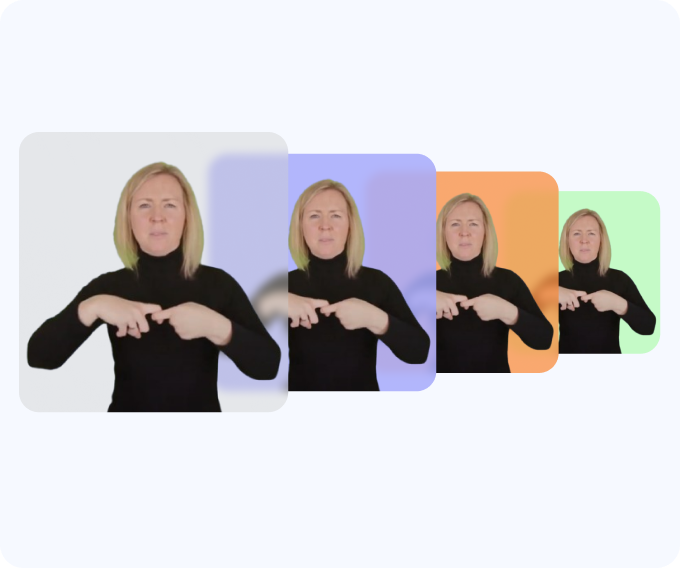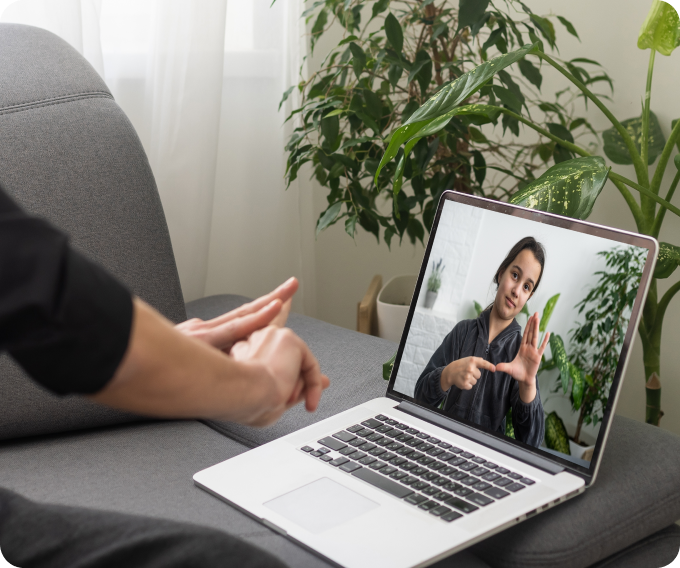The Signapse AI Roadmap: Our Journey to Human-Level Sign Language Translation

Our goal at Signapse is to use state-of-the-art AI to make sign language high-quality, accessible, and available wherever it's needed. Although we're immensely proud of the progress we've made thus far, we're also honest about where we are, where we're headed, and how far we still have to go.
We developed a Sign Language Production Framework (SLPF) to help direct that journey. It measures how well digital signers, such as our AI signer Rae, use sign language in authentic situations. Consider it a sat nav for AI development that indicates our starting point, current location, and necessary steps to get there.
Because, let's be honest, Deaf communities are entitled to more than keyword-based videos and robotic avatars. We're creating something better.
- Understanding the Framework: What Is a Tier?
- Tier 0: No Automation
- Tier 1: Just Getting Started
- Tier 2: Beginning to Make Sense (Our Current Level)
- What’s Next: Our Roadmap to Tier 7
- Why This Matters
- Putting It Into Practice
- What About Other Sign Languages in Our Timeline?
- We’d Love Your Input
Understanding the Framework: What Is a Tier?
Our AI signer is assessed on a seven-tier scale by the Sign Language Production Framework (SLPF). Each tier and the associated definition and attributes can be used to describe both technological advances (existing and in development) along with the key requirements from technology as identified from user feedback. It is not a substitute for accuracy and understandability, which needs to be measured separately.
For the purposes of this guide, we are specifically talking about our journey to advanced British Sign Language (BSL) and American Sign Language (ASL) digital signers.
Tier 0: No Automation
Using a human translator with no AI assistance. Quality is guaranteed, but limited access to translators means creating accessible content is slow and expensive.
Tier 1: Just Getting Started
Here the translation is still performed by a human, but they can use AI tools to make their task easier.
Tier 2: Beginning to Make Sense
This is where things start to improve. Our AI signer looks photo-realistic, moves fluidly, and uses some facial expressions and mouthings. It can sign short phrases and has begun applying sign language grammar, although it still leans heavily on English word order (also known as Sign Supported English – SSE).
Challenges at this stage include:
- Understanding BSL grammar rules like topic-comment structure and role shifts
- Consistent use of space and direction for clarity
- Reducing the need for manual checking (currently essential)
To ensure quality, every video produced through SignStudio is reviewed by a human. This review and quality control process brings the final output to 100% understandability, combining the speed of AI with the expertise of Deaf translators.
How We Measure Understandability
Our accuracy score reflects how closely Rae’s signing matches natural, fluent BSL. To measure it, we work with Deaf sign language experts who:
- Watch AI-generated videos
- Compare them to the intended meaning
- Rate the signing on clarity, grammar, and expression.
Each video is scored using a detailed framework that checks:
- Whether Rae uses the correct signs and facial expressions
- If the grammar and structure match natural BSL
- Whether the message is understood easily by Deaf viewers.
These expert reviews are then used to calculate a percentage.

What’s Next: Our Roadmap to Tier 7
We're on a clear path to evolve our AI signer to Tier 7, mapped against a robust Sign Language Production (SLP) model. That model includes decision points like noun/verb disambiguation, who is involved, and what emotions need to be expressed.
We’ve already reached Tier 6 in the transport sector, where we use Marcel’s appearance to generate accurate and expressive train messaging.
Here’s the journey:
Stage 1: Foundational
- Signer looks natural and uses some non-manual features
- Relies on English grammar order
- Manual review still required
- Working toward improved grammar, placement, and consistency
Upcoming improvements:
- Grammar and sign order: expected within 6 months
- Space and direction handling: within 1–2 months
Stage 2: Transitional (Tier 3/4)
This is where our signer begins to feel genuinely fluent:
- 80% understandability
- 1-day turnaround
- Full use of BSL/ASL grammar structures
- Improved emotional expression and fluidity
Goal: AI translation that doesn’t rely on spoken English grammar and instead speaks true BSL or ASL.
Stage 3: Advanced (Tier 5/6)
- 95% understandability
- Instant translation
- Deep understanding of context and paragraph-level meaning
- Expressive, nuanced signing with accurate role shifts
- Feels like a real human conversation
Goal: Reach near-human performance, sign language translation that requires minimal or no manual intervention.

Why This Matters
We’ve all seen sign language content online that misses the mark, confusing at best and misleading at worst. This roadmap and proficiency framework are our way of raising the standard.
It helps:
- Deaf communities clearly understand the quality and limitations of the technology
- Developers know what “good” really looks like
- Businesses and organisations decide when and where the tech is ready to use
Putting It Into Practice
Our digital signer Rae is regularly assessed using this framework. The progress will be shared publicly as we push for Tier 6/7-level fluency across transport, healthcare, education and beyond.
We’re also exploring ways to:
- Reduce manual checks in low-risk settings (like marketing content)
- Involve Deaf communities in user testing
- Make continuous improvements based on real-world feedback
What About Other Sign Languages in Our Timeline?
We are expanding from BSL translation! Our next stop is to use the same technology we have already developed to create our next digital signers for ASL and beyond. The process is similar: our technology will translate English into ASL grammar and signs to create a digital signer that not only translates your content but also includes expressions, contextual cues and role shifts.
Follow us through our journey to translating ASL!
We’d Love Your Input
This journey isn’t one we can, or should, take alone. If you’re Deaf, Hard of Hearing, a sign language professional, or someone who works in accessibility, we’d love to hear from you.
Tell us:
- What’s working
- What still needs improvement
- What you’d like to see next
Together, we can build a future where sign language access is instant, seamless, and truly inclusive.
Wrapping It All Up
This framework is more than just a list of technical phases. It's a dedication to improving. A road map for the future. And a call to action for real accessibility, created by and for the Deaf community.
Subtitles won't do for us. We're creating something better. And we get there like this.
Want to see our full research on AI translation tiers? → Read the full document here
FAQs
Will you be introducing any other sign languages?
It all began with BSL and now we are moving on to translating English to ASL. But, we won’t stop there! We’re open to expanding our sign language database as much as possible. Follow along our journey to see what sign language is up next.
How long does it take to translate a video into Sign Language?
We have a range of options for you to make the process as flexible as possible. With SignStudio, you can choose from Instant AI, AI BSL (and AI ASL coming soon!) which have different processing times. Your fastest option is Instant AI which will translate your content in a matter of minutes.
Can you translate post-production and live content?
Of course! We have two products that use our innovative AI translation technology. SignStudio is our product that is built to translate post-production content. This includes videos, documents and audio. SignStream is our newest product, capable of translating live content into sign language in real-time. Learn more about our products and book a demo today to see how sign language translation technology can be implemented into your processes.
Related Articles
How does our AI technology work?



